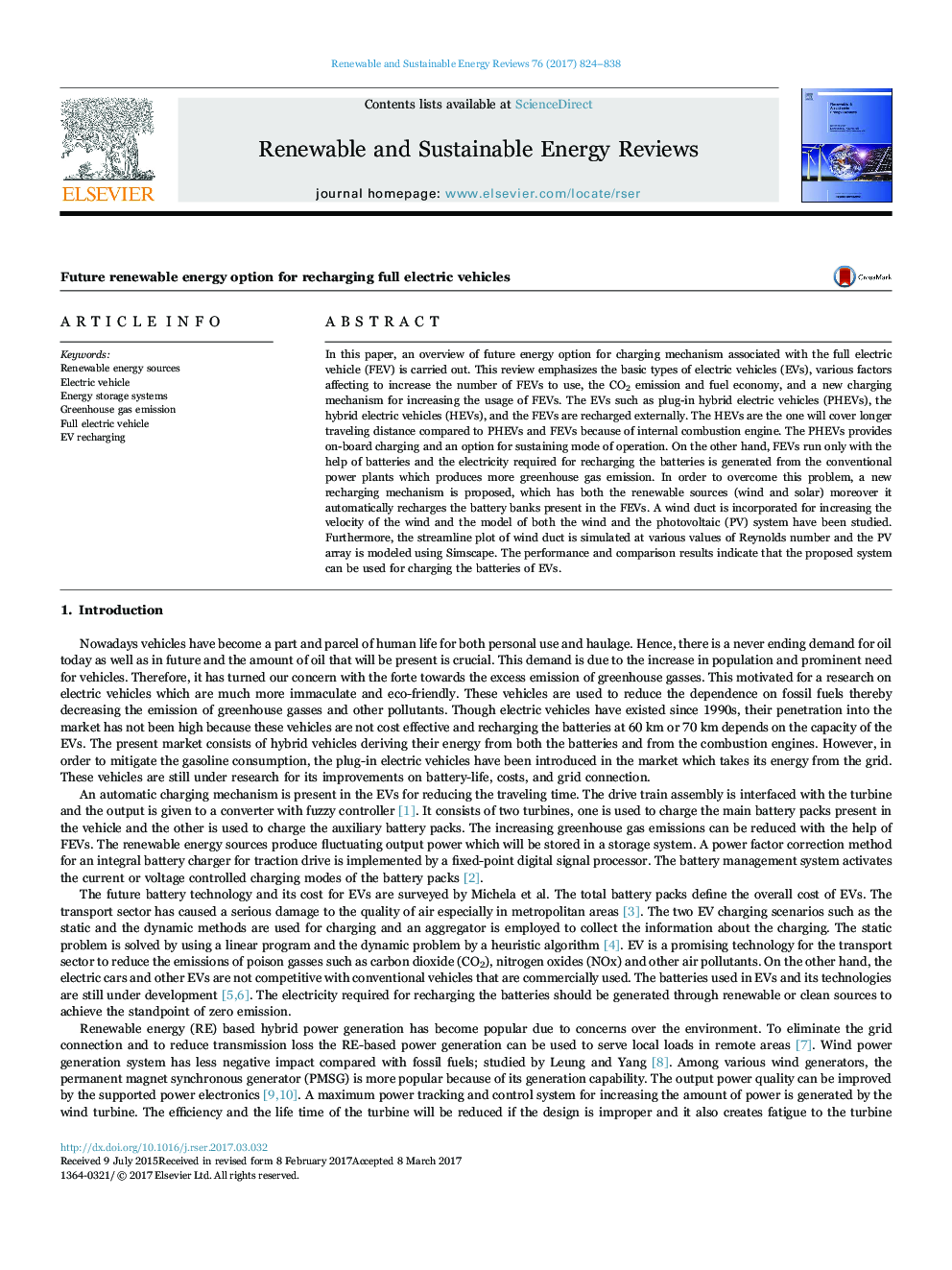| Article ID | Journal | Published Year | Pages | File Type |
|---|---|---|---|---|
| 5482194 | Renewable and Sustainable Energy Reviews | 2017 | 15 Pages |
Abstract
In this paper, an overview of future energy option for charging mechanism associated with the full electric vehicle (FEV) is carried out. This review emphasizes the basic types of electric vehicles (EVs), various factors affecting to increase the number of FEVs to use, the CO2 emission and fuel economy, and a new charging mechanism for increasing the usage of FEVs. The EVs such as plug-in hybrid electric vehicles (PHEVs), the hybrid electric vehicles (HEVs), and the FEVs are recharged externally. The HEVs are the one will cover longer traveling distance compared to PHEVs and FEVs because of internal combustion engine. The PHEVs provides on-board charging and an option for sustaining mode of operation. On the other hand, FEVs run only with the help of batteries and the electricity required for recharging the batteries is generated from the conventional power plants which produces more greenhouse gas emission. In order to overcome this problem, a new recharging mechanism is proposed, which has both the renewable sources (wind and solar) moreover it automatically recharges the battery banks present in the FEVs. A wind duct is incorporated for increasing the velocity of the wind and the model of both the wind and the photovoltaic (PV) system have been studied. Furthermore, the streamline plot of wind duct is simulated at various values of Reynolds number and the PV array is modeled using Simscape. The performance and comparison results indicate that the proposed system can be used for charging the batteries of EVs.
Related Topics
Physical Sciences and Engineering
Energy
Renewable Energy, Sustainability and the Environment
Authors
C. Chellaswamy, R. Ramesh,
